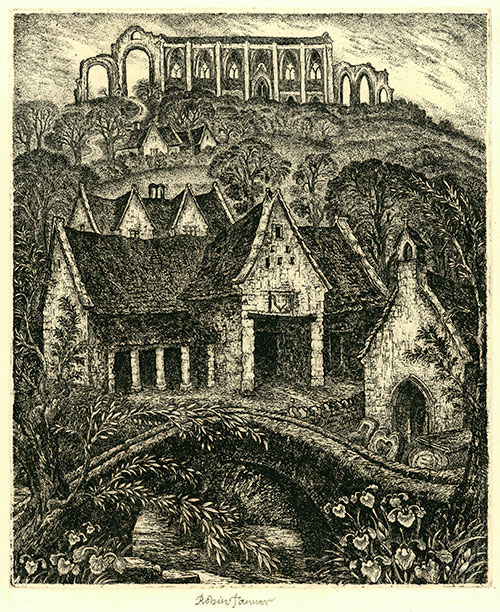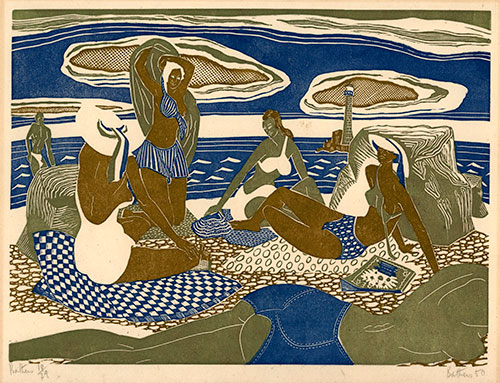The
Home Page Selection
If
you require further information on any
print featured here, please contact
us.
When
a print has been sold it will be marked
as Sold.
A
growing archive of selections
from previous Home pages is featured in
the
Home
Page Selection Archive |
|
See
also :
Click
on a thumbnail (left)
to link directly with the entry for that
print, or scroll down to view all the selected
prints from the current Home
Page.
Images
are not to relative scale (see stated dimensions) and also at only modest resolution.
If you wish to view extracts of an image at higher resolution, please Contact us.
|
|
|
|

| |
JAN SAENREDAM
Zaandam c1565 – 1607 Assenfeldt
Saenredam was orphaned at the age of nine and brought up by his uncle in Assendelft. Initially a farm worker, with the help of a local patron he entered Goltzius’ circle in 1589.
He set up as an independent engraver in Assendelft in about 1595.
Morning
Bartsch 91, Hollstein 97 i/iii
213 x 151 mm
Engraving to the design of Goltzius.
First state, before any publisher’s address.
The plate signed with Saenredam’s name and Goltzius’ initials.
On laid paper watermarked with a shield with a double headed eagle.
A central horizontal drying crease.
Other creases.
Foxed in the margins.
£1500
Ex ‘Collection Landau Finaly’ – Baron Horace de Landau (Lugt 1334c) (stamp, shown below, mounted in the top left corner of the margin recto
and Cesare Gastaldi (ex Lugt) (orange circular stamp verso).

The verse at the foot of the plate is by Cornelis Schonæus (1541-1611),
a Humanist writer from Haarlem, author of many of the Latin verses
found on prints of the Haarlem mannerist school around Goltzius.
Return to top ^ |
|
|
|

|
|
ROBIN TANNER A.R.E.
Bristol 1904 – 1988 King’s Langley, Wiltshire
Aldhelmsburgh
Garton 48 ii/iii
300 x 248 mm
Original etching, 1984.
A very rare proof prior to Garton & Cooke’s edition of 25 in the third state (the only issue) in 1985.
Signed in pencil.
On cream laid paper.
£3000
The composition combines a variety of architectural features taken from ‘real’ buildings.
In the foreground the river Avon is crossed by the humped Fosseway Bridge at Long Newton;
the small medieval chapel to the right is based on Bremilham Church, Cowage (the tiniest church in Britain in service, situated in a farmyard outside of Malmesbury).
The great Barn is an amalgamation of several local Wiltshire examples and stands in front of the gabled farmhouse of Easton Piercey near Kington St Michael.
Perched high on the hill is Malmesbury Abbey.
The present abbey building, of which only the nave remains, the tall spire having fallen in the 15th century and the tower sometime later, was begun in 1180, but originates in the church of the Benedictine monastery founded c876 by St Aldhelm, a scholar poet and the first Wessex saint.
Malmesbury would develop an illustrious reputation for learning; incidentally in the 11th century Brother Eilmer of Malmesbury attempted the first human flight, jumping ‘winged’ from the tower.
Return to top ^ |
|
|
|
 |
|
Baron DOMINIQUE VIVANT DENON
Chalon-sur-Saône 1747 – 1825 Paris
Artist, archaeologist and writer, Vivant Denon as a young man, when still going by his original aristocratic name of ‘de Non’, was also a diplomat for Louis XV and Louis XVI.
When based in Italy he learned to engrave. With the Revolution he consolidated his name to Denon, survived with the help of the painter David, and was subsequently attached as an artist to Napoleon’s expedition to Egypt in 1798. Napoleon would make him a baron.
In 1804 Napoleon appointed him director of museums and in this capacity he accompanied Napoleon, as artistic adviser, on his campaigns in Germany, where in 1806 they met Alois Senefelder, the inventor of lithography.
Denon would be one of the first artists to produce lithographs in France.
His first extant lithograph is dated 1809.
In 1815 with the downfall of Napoleon Denon retired from his official positions.
Denon et deux femmes
(Self portrait drawing a young woman in profile, accompanied by another woman)
Inventaire du Fonds Français 19
167 x 188 mm
Original lithograph, c1816-17.
The stone signed with the monogram.
An illegible pencil inscription beneath.
On grey-green wove paper.
The occasional small fox mark.
£1500
Ex collection Rolf Arnim Winkler (1904-1989), author of several books on lithography (Ex Lugt).
Return
to top ^ |
|
|
|
 |
|
RODOLPHE BRESDIN
Montrelais, Maine-et-Loire 1822 – 1885 Sèvres
Inspired by Rembrandt, Bresdin was self-taught as a graphic artist after he arrived in Paris in 1839.
His life style, like his ‘fantasy’ prints, was singular. He walked around with a white rabbit, which inspired Champfleury in Chien-Caillou, (the story of an engraver who lives in a garret with a white rabbit). Chien-Caillou became Bresdin’s nickname.
Les Villes derrière le Marécage
The Towns beyond the swamp
Préaud 97 ; Van Gelder 124a i/ii
190 x 155 mm (image)
Original pen and tusche lithograph, 1878.
Very rare in this state, with the bird on the branch silhouetted against the sky.
On chine, trimmed to the image and mounted onto wove.
With the Bresdin blind studio stamp (Lugt 2194).
£1000
Ex collection Leonard Baskin (Lugt 4474)
A revising and enlarging of Le Papillon et la Mare, of 1868, originally drawn as an illustration to a fable by Hippolyte de Thierry-Faletans.
Return
to top ^ |
|
|
|
 |
|
BLAIR HUGHES-STANTON S.W.E.
London 1902 – 1981 Kings Lynn
After a boyhood six years on the Royal Navy training ship HMS Conway, Hughes-Stanton attended the Byam Shaw School, 1919-22, the R.A. Schools 1922-23, and evening classes at Underwood’s Brook Green School 1921-25 being left in charge of the school when Underwood visited America 1925-28.
In 1923 the American Marion Mitchell introduced her fellow students at Brook Green to wood engraving, which became an important activity at the Underwood school.
A founder member of the short-lived English Wood Engraving Society in 1925, Hughes-Stanton was invited to join the Society of Wood Engravers in 1932.
In 1930, with Gertrude Hermes, whom he had married in 1926, Hughes-Stanton moved to Powys to direct and engrave for the Gregynog Press, together with Agnes Miller Parker and her husband William McCance. Here he produced some of his best work.
He left Gregynog in 1933 after separating from Hermes and moved to East Anglia where he founded the Gemini Press.
In the War he was seriously injured in a POW camp and not repatriated till 1943.
In later decades, Hughes-Stanton turned to using lino for colour printing and to create much larger, spectacular, images as he went increasingly abstract.
Bathers
253 x 340 mm
Original colour linocut, 1950.
Dated in pencil, entitled twice (once presumably mistakenly instead of his name) and numbered 18/29.
On thin japan.
Sold
Return
to top ^ |
|
|
|
|
|
|
|